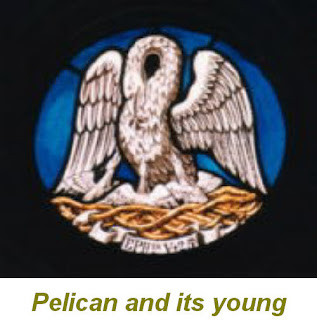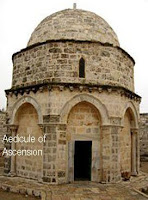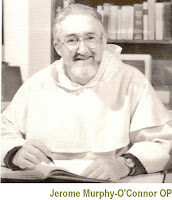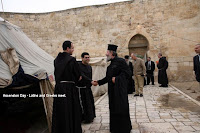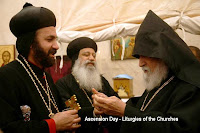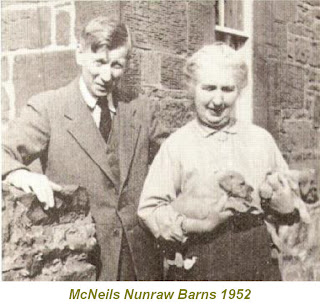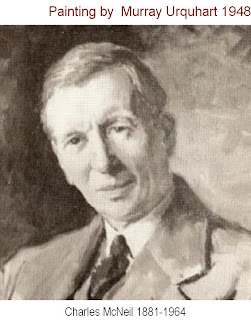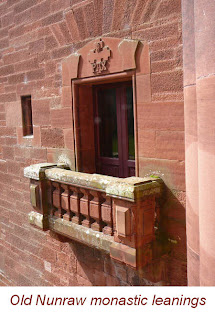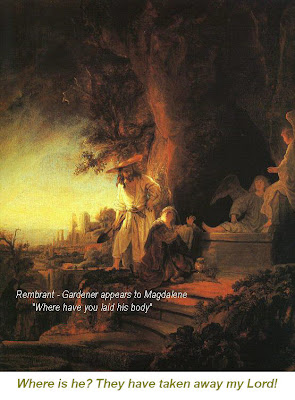Vocation - MonasticismAt our community pre-Compline Reading we are listening to the book of Abbot Hugh Gilbert OSB, Pluscarden Abbey. Unfolding the Mystery. Gracewing 2007
His Quote on page 26 reminds us of an enlightening monastic document.
John Paul II Orientale Lumen.
“The Monastery is the  prophetic place where creation becomes praise of God and the precept of concretely lived charity becomes the ideal of human co-existence; it is where the human being seeks God without limitation or
prophetic place where creation becomes praise of God and the precept of concretely lived charity becomes the ideal of human co-existence; it is where the human being seeks God without limitation or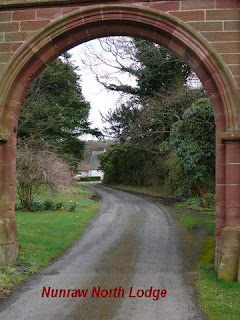 impediment, becoming a reference point for all people, bearing them in his heart and helping them to seek God”(9). --------------
impediment, becoming a reference point for all people, bearing them in his heart and helping them to seek God”(9). --------------
The whole document is rich in the monastic tradition and makes great Lection Divina. The following excerpts touch on direct references to monks and monasticism.
Monasticism as a model of baptismal life
9. I would now like to look at the vast panorama of Eastern Christianity from a specific vantage point which affords a view of many of its features: <monasticism.>
In the East monasticism has retained great unity. It did not experience the development of different kinds of apostolic life as in the West. The various expressions of monastic life, from the strictly coenobitic, as conceived by Pachomius or Basil, to the rigorously eremitic, as with Anthony or Macanus of Egypt, correspond more to different stages of the spiritual journey than to the choice between different states of life. In any event, whatever form they take, they are all based on monasticism.
Moreover, in the East, monasticism was not seen merely as a separate condition, proper to a precise category of Christians, but rather as a reference point for all the baptized, according to the gifts offered to each by the Lord; it was presented as a symbolic synthesis of Christianity.
When God's call is total, as it is in the monastic life, then the person can reach the highest point that sensitivity, culture and spirituality are able to express. This is even more true for the Eastern Churches, for which monasticism was an essential experience and still today is seen to flourish in them, once persecution is over and hearts can be freely raised to heaven. The monastery is the prophetic place where creation becomes praise of God and the precept of concretely lived charity becomes the ideal of human coexistence; it is where the human being seeks God without limitation or impediment, becoming a reference point for all people, bearing them in his heart and helping them to seek God.
I would also like to mention the splendid witness of nuns in the Christian East. This witness has offered an example of giving full value in the Church to what is specifically feminine, even breaking through the mentality of the time. During recent persecutions, especially in Eastern European countries, when many male monasteries were forcibly closed, female monasticism kept the torch of the monastic life burning. The nun's charism, with its own specific characteristics, is a visible sign of that motherhood of God to which Sacred Scripture often refers.
Therefore I will look to monasticism in order to identify those values which I feel are very important today for expressing the contribution of the Christian East to the journey of Christ's Church towards the Kingdom. While these aspects are at times neither exclusive to monasticism nor to the Eastern heritage they have frequently acquired a particular connotation in themselves. Besides, we are not seeking to make the most of exclusivity, but of the mutual enrichment in what the one Spirit has inspired in the one Church of Christ.
Monasticism has always been the very soul of the Eastern Churches: the first Christian monks were born in the East and the monastic life was an integral part of the Eastern passed on to the West by the great Fathers of the undivided Church.[26]
The strong common traits uniting the monastic experience of the East and the West make it a wonderful bridge of fellowship, where unity as it is lived shines even more brightly than may appear in the dialogue between the Churches.
Between Word and Eucharist
10. Monasticism shows in a special way that life is suspended between two poles: the Word of God and the Eucharist. This means that even in its eremitical forms, it is always a personal response to an individual call and, at the same time, an ecclesial and community event.
A father in the Spirit
13. A monk's way is not generally marked by personal effort alone. He turns to a spiritual father to whom he abandons himself with filial trust, in the certainty that God's tender and demanding fatherhood is manifested in him. This figure gives Eastern monasticism an extraordinary flexibility: through the spiritual father's intervention the way of each monk is in fact strongly personalized in the times, rhythms and ways of seeking God. Precisely because the spiritual father is the harmonizing link, monasticism is permitted the greatest variety of coenobitic and eremitical expressions. Monasticism in the East has thus been able to fulfil the expectations of each Church in the various periods of its history.[31]
In this quest, the East in particular teaches that there are brothers and sisters to whom the Spirit has granted the gift of spiritual guidance. They are precious points of reference, for they see things with the loving gaze with which God looks at us. It is not a question of renouncing one's own freedom, in order to be looked after by others. It is benefiting from the knowledge of the heart, which is a true charism, in order to be helped, gently and firmly, to find the way of truth. Our world desperately needs such spiritual guides. It has frequently rejected them, for they seemed to lack credibility or their example appeared out of date and scarcely attractive to current sensitivities.
Whatever path the Spirit has in store for him, the monk is always essentially the man of communion. Since antiquity this name has also indicated the monastic style of coenobitic life. Monasticism shows us how there is no true vocation that is not born of the Church and for the Church. This is attested by the experience of so many monks who, within their cells pray with an extraordinary passion, not only for the human person but for every creature, in a ceaseless cry that all may be converted to the saving stream of Christ's love. This path of inner liberation in openness to the Other makes the monk a man of charity. In the school of Paul the Apostle, who showed that love is the fulfilling of the law (cf. Rom 13:10), Eastern monastic communion has always been careful to guarantee the superiority of love over every law.
This communion is revealed first and foremost in service to one's brothers in monastic life, but also to the Church community, in forms which vary in time and place, ranging from social assistance to itinerant preaching. The Eastern Churches have lived this endeavour with great generosity, starting with evangelization, the highest service that the Christian can offer his brother, followed by many other forms of spiritual and material service. Indeed it can be said that monasticism in antiquity—and at various times in subsequent ages too—has been the privileged means for the evangelization of peoples.
27. With regard to monasticism, in consideration of its importance in Eastern Christianity, we would like it to flourish once more in the Eastern Catholic Churches, and that support be given to all those who feel called to work for its revitalization.[66] In fact, in the East an intrinsic link exists between liturgical prayer, spiritual tradition and monastic life. For this reason precisely, a well-trained and motivated renewal of monastic life could mean true ecclesial fruitfulness for them as well. Nor should it be thought that this would diminish the effectiveness of the pastoral minis try which in fact will be strengthened by such a vigorous spirituality, and thus will find once more its ideal place. This hope also concerns the territories of the Eastern diaspora, where the presence of Eastern monasteries would give greater stability to the Eastern Churches in those countries, and would make a valuable contribution to the religious life of Western Christians.
27. With regard to monasticism, in consideration of its importance in Eastern Christianity, we would like it to flourish once more in the Eastern Catholic Churches, and that support be given to all those who feel called to work for its revitalization.[66] In fact, in the East an intrinsic link exists between liturgical prayer, spiritual tradition and monastic life. For this reason precisely, a well-trained and motivated renewal of monastic life could mean true ecclesial fruitfulness for them as well. Nor should it be thought that this would diminish the effectiveness of the pastoral minis try which in fact will be strengthened by such a vigorous spirituality, and thus will find once more its ideal place. This hope also concerns the territories of the Eastern diaspora, where the presence of Eastern monasteries would give greater stability to the Eastern Churches in those countries, and would make a valuable contribution to the religious life of Western Christians.
For the complete text see
WEB vatican.va/holy_father/john_paul_ii/apost_letters
See also:
'Orientale Lumen' Its Relevance to Liturgy and Monastic Theology. A Joint Symposium at Belmont Abbey. ‘Orientale Lumen’ ... WEB.benedictines.org.uk/theology/2005/index.htm –

